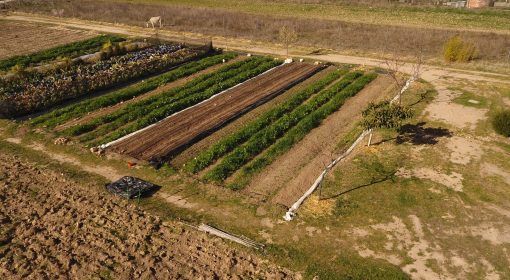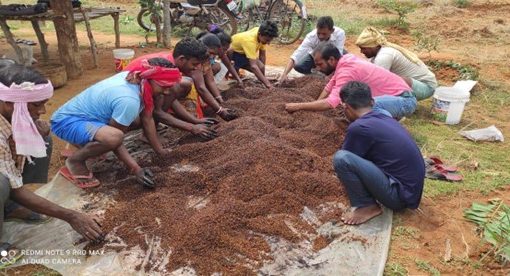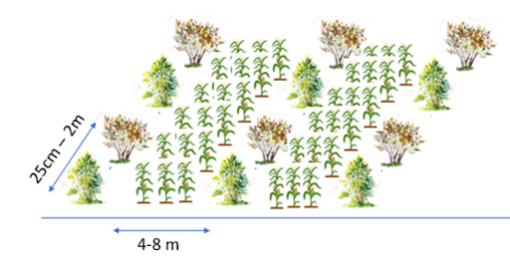By Rubén Borge (RockinSoils), Femke van Woesik (MetaMeta), Redeat Daneil (MetaMeta) & Frank van Steenbergen (MetaMeta)
Hidden Hunger, a global nutritional problem caused by subtle micronutrient deficiencies in our food, can have profound health implications. While micronutrients are crucial substances necessary for the growth and maintenance of life, micronutrient deficiencies do not produce the typical hunger symptoms associated with malnutrition. Kul C. Gautam, a former deputy executive director of UNICEF, says, “You might not feel it in your belly, but it strikes at the core of your health and vitality.”[1].
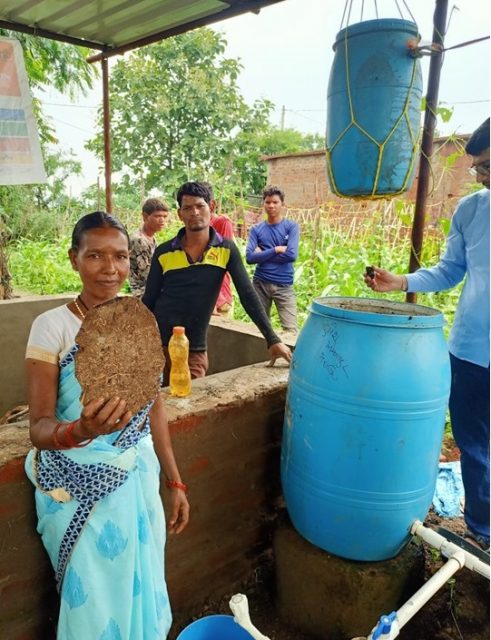
One way to measure the nutrient density of food is by assessing the number of nutrients per calorie[2]. Despite the increase in global production of many crops, including cereals, their nutritional quality and density has not improved, leading to a rise in micronutrient deficiencies. To address this issue, we must shift from simply meeting populations’ caloric needs to ensuring that all nutrients are adequately supplied. The World Health Organisation (WHO) calls this approach “Nutrient Security”, which should be a primary goal for food security programs[3].
Hidden Hunger is a global issue, but India takes the lead as the country with the highest prevalence. The poor micronutrient fertility of Indian soils, particularly zinc, iron, manganese, copper, boron and molybdenum, contributes significantly to this problem. Repeated crop cultivation over extended periods without proper replenishment has resulted in the depletion of these essential nutrients from the soil system. [4]. In other cases, crops can show nutrient deficiencies when soil fertility has been compromised, which affects microbe functioning. As a result, the nutrients are no longer available for plant uptake and remain ‘trapped’ in the soil.[5]. The effects of micronutrient deficiencies are keenly felt by Indian women, whose iron requirements increase during menstruation, pregnancy, and lactation.[6]. Shockingly, iron deficiency affects more than half of the female Indian population and nearly two billion people worldwide.[7].
The quality and fertility of agricultural systems are essential in ensuring that food crops are rich in micronutrients. As such, it is crucial to adopt strategies that can improve the nutrient levels in food. One approach is seed treatment, where plant breeders focus on improving the nutritional quality traits when breeding for improved varieties. Another method is micronutrient-enriched fertilizers, which can be applied through foliar (application to plant leaves) or soil application. Applying micronutrients to the soil or plant leaves to increase micronutrient contents of the edible part of food crops is called agronomic biofortification. Finally, soil regeneration is an approach that aims to restore the natural biological activity of soils that increases the degradation of soil parent materials and, therefore, the bioavailability of certain nutrients.
Iron deficiency is a huge issue for instance in the the Indian states of Madhya Pradesh and Jharkhand: in Jharkhand, 65.2%[8] and in Madhya Pradesh, 54.3%[9] of the women are suffering from iron deficiencies. There is a very urgent need to to develop and integrate a cost-effective iron fertilizer management approach that maximizes the iron concentration in food beneficial to the health of the rural people in these areas – creating a double win of better crop growth and more enriched food.
Enriching biofertilizers with iron can be done by adding Iron Sulphate (FeSO4). An experiment by ICAR (the Indian Council of Agricultural Research) evaluated the effectiveness of soil, foliar, and seed treatment of iron in alleviating iron deficiency in rice. Results showed that the foliar application of Iron Sulphate (3% solution, thrice 40, 60, and 75 days after sowing of rice) was most effective in increasing the iron content of milled rice.[11]. A study conducted in the southeast of Iran showed that foliar application of Iron Sulphate (1%) increased the Iron concentration in the grains by 21%[12].
If Iron Sulphate is unavailable in the region, a more widely available form of iron is Iron Oxide (Fe2O3). Iron oxide is not water-soluble and has a low bioavailability. Since most Iron in the soils is oxidized, Iron must be reduced and/or chelated (coated by organic acids) to pass into the root.[13]. In nature non, Gramineae plants use reduction mechanisms to absorb iron, while Gramineae plants use chelation-based strategies. Reduction processes of iron occur naturally in the soil but at a slow rate. They are dependent on soil physicochemical conditions and biological activity.[14]. To speed up the reduction process, a bioreactor tank can reproduce bacteria in controlled conditions, inducing highly intense bacterial activity. Biofertilizer production may increase iron absorption by actin in at least the two mentioned mechanisms. Firstly, lactic fermentation reduces Iron oxides, and secondly, it produces organic acids like acetic and lactic with strong chelating properties.
In the context of rural India, both forms of Iron (oxide and sulphate) can be transformed in the process of making biofertilizers. This fermented product can be made locally from cheap and easily accessible materials: cow dung, milk, sugars, ashes, and rock dust mixed with water. After a month of fermentation, the solution will contain numerous minerals and compounds that feed and protect plants from insects and pathogens. Since biofertilizers are produced at home or on the farm, they are always available when needed and can be produced with locally available materials at a minimal cost. Not only does the foliar application of micronutrient-rich biofertilizer improve nutrient security, but it also enhances crop productivity, thus creating a win-win situation for both growers and consumers.[15].
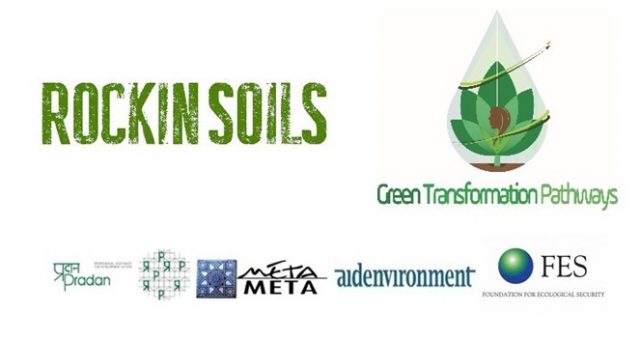
[1] https://www.ifpri.org/sites/default/files/ghi/2014/feature_1818.html
[2] Drewnowski, A. (2009). Defining nutrient density: development and validation of the nutrient rich foods index. J. Am. Coll. Nutr. 28, 421S−426S. doi: 10.1080/07315724.2009.10718106
[3] Welch, R. M., Graham, R. D., & Cakmak, I. (2013). Linking agricultural production practices to improving human nutrition and health. FAO/WHO: Rome, Italy, 7-16.
[4] Chakraborty, M., Chakraborty, D., Mondal, P., & Paul, R. (2021). Micronutrient deficiency stress in soils of India: Tackling it to alleviate hidden Hunger. soil science: Fundamentals to recent advances, 801-821.
[5] Comerford, N. B. (2005). Soil factors affecting nutrient bioavailability. Nutrient acquisition by plants: an ecological perspective, 1-14.
[6] Antony, A. C., Vora, R. M., & Karmarkar, S. J. (2022). The silent tragic reality of Hidden Hunger, anaemia, and neural-tube defects (NTDs) in India. The Lancet Regional Health-Southeast Asia, 6.
[7] Singh, S. P., Keller, B., Gruissem, W., & Bhullar, N. K. (2017). Rice NICOTIANAMINE SYNTHASE 2 expression improves dietary iron and zinc levels in wheat. Theoretical and Applied Genetics, 130, 283-292.
[8] Natekar, P., Deshmukh, C., & Limaye, D. (2022). A micro review of a nutritional public health challenge: iron deficiency anaemia in India. Clinical Epidemiology and Global Health, 100992.
[9] Sinha, D., & Shrivastava, S. (2019). Prevalence of anaemia during pregnancy and its association with adverse perinatal outcomes in Madhya Pradesh, India. International Journal of Reproduction, Contraception, Obstetrics and Gynecology, 8(3), 845-849.
[10] Rawashdeh, H. M., & Florin, S. (2015). Foliar application with iron as a vital factor of wheat crop growth, yield quantity and quality: A Review. International Journal of Agricultural Policy and Research, 3(9), 368-376.
[11] Meena, B. L., Rattan, R. K., Datta, S. P., & Meena, M. C. (2016). Effect of iron application on iron nutrition of aerobic rice grown in different soils.
[12] Pahlavan‐Rad, M. R., & Pessarakli, M. (2009). Response of wheat plants to zinc, iron, and manganese applications and uptake and concentration of zinc, iron, and manganese in wheat grains. Communications in soil science and plant analysis, 40(7-8), 1322-1332.
[13] Kong, W. L., Wang, Y. H., & Wu, X. Q. (2021). Enhanced iron uptake in plants by volatile emissions of Rahnella aquatilis JZ-GX1. Frontiers in Plant Science, 12, 704000.
[14] Colombo, C., Palumbo, G., He, J. Z., Pinton, R., & Cesco, S. (2014). Review on iron availability in soil: interaction of Fe minerals, plants, and microbes. Journal of soils and sediments, 14, 538-548.
[15] Kaur, A., & Singh, G. (2022). Zinc and iron application in conjunction with nitrogen for agronomic biofortification of field crops–a review. Crop and Pasture Science.

